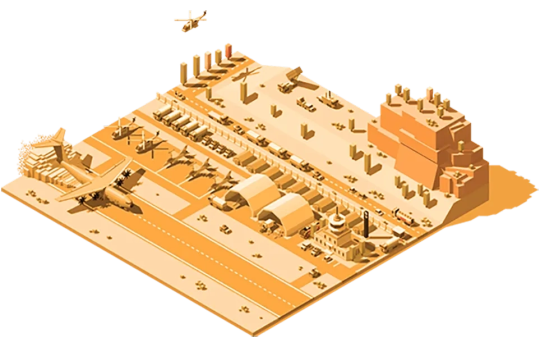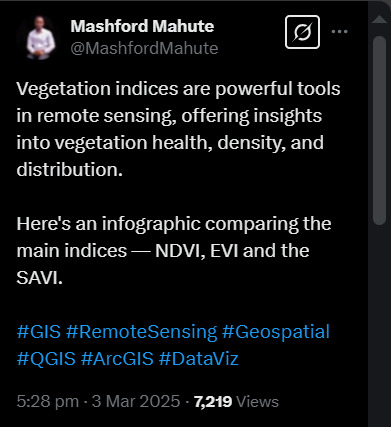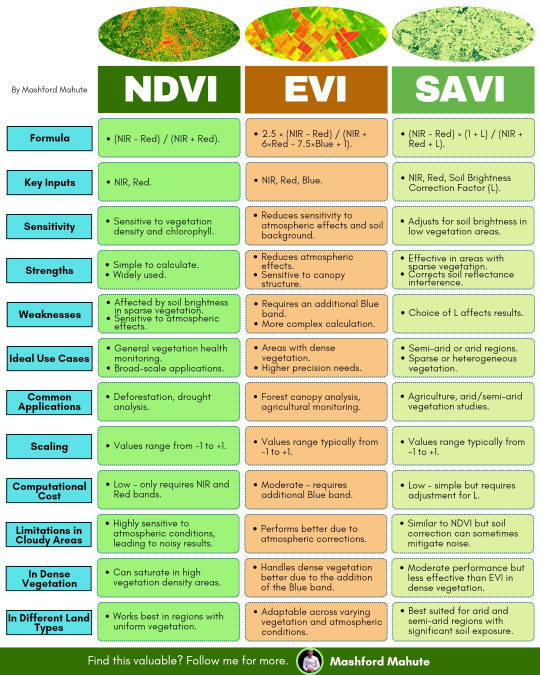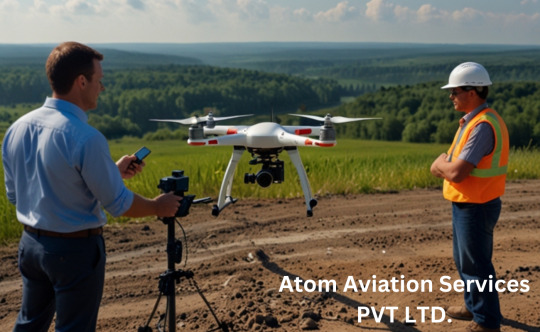#RemoteSensing
Explore tagged Tumblr posts
Text
Drone Survey in the Real World: Revolutionizing Industries with Atom Aviation
In today’s rapidly advancing world, industries across the globe are turning to drone survey technology to revolutionize the way they collect data, perform inspections, and make critical decisions. Gone are the days of traditional surveying methods that are time-consuming, costly, and labor-intensive. Atom Aviation, a leading provider of drone surveying services, is at the forefront of this transformation, providing businesses with fast, accurate, and cost-effective solutions.

What is a Drone Survey?
A drone survey is an innovative approach that utilizes unmanned aerial vehicles (UAVs) to collect data from the air. Drones equipped with cameras, LIDAR (Light Detection and Ranging), and other sensors can capture high-resolution imagery, topographical data, and 3D models of vast areas in a fraction of the time compared to traditional ground-based methods.
This data is then processed into actionable insights for industries like construction, agriculture, real estate, and more, enhancing decision-making and project planning.
The Real-World Benefits of Drone Surveys
1. Speed and Efficiency One of the main advantages of using drones for surveying is the significant reduction in time. With traditional surveying, teams would have to manually visit every corner of a site, sometimes requiring several days or even weeks for large projects. In contrast, drones can complete the same tasks in hours, allowing businesses to access crucial data quickly and make decisions faster.
2. Cost-Effectiveness Drone surveying reduces the need for expensive equipment like helicopters or cranes used in traditional aerial surveys. Additionally, fewer personnel are required to operate the drones, further lowering costs. Atom Aviation ensures that businesses can enjoy these cost savings without compromising on the accuracy or quality of the data collected.
3. High-Resolution Data Drones are equipped with high-definition cameras and specialized sensors that capture data with exceptional precision. Whether it’s topographical mapping, volumetric analysis, or landscape modeling, drones provide a level of detail that is difficult to achieve with manual methods. This is especially crucial in industries like construction, where accurate measurements are essential for project success.
4. Access to Hard-to-Reach Areas In many industries, there are locations that are difficult to access using traditional surveying methods due to safety concerns or physical barriers. Drones can easily navigate hazardous environments, such as construction sites, power lines, or agricultural fields, ensuring that no area is left unexamined.
5. Minimal Disruption Unlike ground-based surveying, which may require disturbing the environment or disrupting normal business operations, drone surveys are non-invasive. They can operate without disturbing ongoing work, making them ideal for active construction sites or agricultural fields.
How Atom Aviation is Leading the Charge
Atom Aviation is a company that has harnessed the full potential of drone surveying to offer customized solutions for businesses across various sectors. With their fleet of state-of-the-art drones and highly skilled pilots, Atom Aviation ensures that every project, no matter how large or small, is completed with precision and efficiency.
Atom Aviation’s drone surveying services have been particularly valuable in the following industries:
Construction: From land surveys to site inspections, drones help construction companies keep projects on track and ensure compliance with building codes and regulations.
Agriculture: Drone surveys allow farmers to monitor crop health, assess soil conditions, and make data-driven decisions to maximize yield.
Real Estate: Property developers and real estate professionals use drone surveys to create accurate 3D models and aerial maps of properties, helping to market developments and make informed investment decisions.
Infrastructure: Drones enable inspectors to assess bridges, powerlines, and pipelines, identifying potential issues without the need for dangerous manual inspections.
Why Choose Drone Surveying with Atom Aviation?
Choosing the right provider for drone surveying is crucial to getting accurate, reliable results. Atom Aviation stands out for several reasons:
Advanced Drone Technology: Atom Aviation uses the latest drones equipped with cutting-edge cameras and sensors for precise data collection.
Expert Team: Their team consists of certified drone pilots and experienced surveyors, ensuring that all data is collected safely and accurately.
Tailored Solutions: Whether you need topographic surveys, volumetric analysis, or 3D mapping, Atom Aviation offers services customized to meet the unique needs of your project.
Timely Delivery: With a commitment to efficiency, Atom Aviation delivers survey data quickly, enabling businesses to make decisions without delays.
Conclusion
The application of drone surveys has brought about a significant change in how businesses approach data collection and site analysis. With companies like Atom Aviation leading the way, industries now have access to faster, more cost-effective, and highly accurate surveying methods that enhance productivity and decision-making. Whether you're in construction, agriculture, real estate, or infrastructure, Atom Aviation is the partner you need for cutting-edge drone surveying solutions.
For more information on how Atom Aviation can assist with your next drone survey, visit their website today and discover how they can take your business to new heights!
Keywords Used:
Drone survey
Atom Aviation
Drone surveying services
#drone#drone survey#drone surveying#dronetober#survey#mining#AerialSurveying#DroneData#ConstructionSurveying#TopographicMapping#AtomAviation#UAVSurvey#3DMapping#LandSurveying#RemoteSensing
2 notes
·
View notes
Text
I'm excited to share my latest in-depth analysis on how Geographic Information Systems are revolutionizing defense operations worldwide. As the author of "Mapping Tomorrow: Navigating to the World of Geographic Information System," I've explored how cutting-edge geospatial technologies are transforming military capabilities across multiple domains. In this comprehensive blog post, I examine six critical case studies that demonstrate the strategic impact of advanced GIS implementation: Indo-Pacific Maritime Domain Awareness systems integrating satellite surveillance with oceanographic modeling Humanitarian demining operations enhanced through AI-driven terrain analysis and probability mapping Urban warfare planning revolutionized by high-fidelity 3D modeling and subsurface infrastructure mapping South Asian border security monitoring leveraging multi-sensor integration and cross-border incident mapping Military humanitarian assistance powered by damage assessment automation and resource optimization Electromagnetic spectrum operations treating digital signals as mappable terrain The article also explores emerging trends that will shape the future of defense GIS, including quantum computing applications, edge computing for disconnected operations, and advanced human-machine teaming in spatial analysis. As conflicts become increasingly complex and multi-domain, superior geospatial intelligence has emerged as a decisive factor in both conventional military operations and asymmetric warfare. The organizations that most effectively leverage these capabilities will maintain significant advantages in our increasingly contested world.

View On WordPress
#ai#aiindefense#artificial-intelligence#asymmetric warfare#battlespace management#command and control systems#common operating picture#defensemapping#defensetechnoloy#dronemapping#education#environment#force multiplier technologies#force protection#geographicinformationsystems#geoint#geospatialinelligence#gis#intelligence fusion#intelligence preparation of battlefield#lidar#military decision support systems#military modernization#militaryapplications#multi-domain operations#operational planning#predictiveanalysis#RemoteSensing#strategic intelligence#technology
0 notes
Text

ArcGIS Pro Masterclass – Kursus Komprehensif di Udemy
💡 Ingin menguasai ArcGIS Pro? Kursus Udemy ini mencakup pemrosesan data, analisis spasial, dan pembuatan peta digital secara profesional!
🗺️ Dapatkan Diskon 74% (Hanya Rp 129K dari Rp 499K) (Diskon 71%) – Enroll sekarang!
#ArcGISProMastery#KursusGeospasial#DataPeta#GISProfessional#ArcGISProTraining#BelajarGIS#DataAnalisis#UdemyKursus#GIS2025#RemoteSensing
0 notes
Text
Industrial Sensors for Temperature Monitoring Australia
Temperature monitoring is crucial in modern industries. In Australia, businesses rely heavily on accurate and durable sensors. Whether it is food processing, mining, manufacturing, or pharmaceuticals, having the right sensor ensures safety, quality, and efficiency. Industrial sensors for temperature monitoring Australia offer precise control and real-time data needed for critical operations.

Industrial Sensors for Temperature Monitoring Australia In this article, we dive deep into how industrial sensors for temperature monitoring Australia are transforming industries. We will also look at their types, technical features, applications, and buying tips.
Importance of Industrial Sensors for Temperature Monitoring Australia
Industrial sensors for temperature monitoring Australia serve as the backbone for many systems. They help in maintaining the right temperature for machines, products, and environments. Without these sensors, industries would face equipment failures, production losses, and safety risks. Australian industries operate in extreme conditions. From the scorching heat of mining zones to the cold storage of pharmaceuticals, temperature variations are common. Thus, reliable sensors are not a luxury but a necessity. Companies today aim for accuracy within fractions of a degree. This is where high-quality industrial sensors for temperature monitoring Australia come into play.
Key Features of Industrial Sensors for Temperature Monitoring Australia
Modern industrial sensors used in Australia are packed with technical features. Here are some common characteristics: - High Accuracy: Precision up to ±0.1°C in many models - Wide Temperature Range: Some can measure from -200°C to +1200°C - Robust Design: Resistant to dust, water, and corrosion - Real-Time Monitoring: Instant data transmission - Integration with IoT: Smart systems for predictive maintenance Industries demand not just measurement but reliable data under harsh conditions. Industrial sensors for temperature monitoring Australia are designed to meet these demands.
Types of Industrial Sensors for Temperature Monitoring Australia
There are different types of sensors used across Australian industries. Each has its strengths and specific use cases.
Thermocouples
Thermocouples are one of the oldest and most trusted types. They work by measuring voltage changes between two dissimilar metals. - Advantages: Wide range, rugged, inexpensive - Disadvantages: Less accurate compared to RTDs Thermocouples are heavily used in mining and metal industries in Australia.#IndustrialSensors, #TemperatureMonitoring, #AustraliaSensors, #IndustrialAutomation, #SmartSensors, #SensorTechnology, #TemperatureControl, #ProcessMonitoring, #IndustrialEquipment, #RemoteMonitoring, #IndustrialIoT, #SmartManufacturing, #TemperatureSensors, #IndustrialTemperatureMonitoring, #MonitoringSolutions Read the full article
#Australia#Automation#IndustrialEquipment#IndustrialSensors#IoTSensors#ProcessMonitoring#RemoteSensing#SensorSolutions#SmartManufacturing#TemperatureMonitoring
0 notes
Text

High-quality rooftop labeling for geospatial dataset
We deliver precise, scalable, and reliable rooftop data annotation services that power next-gen AI applications — from smart city infrastructure to solar tech and urban planning.
Our experienced team ensures:
Accurate polygon labeling
Rapid turnaround at scale
Enterprise-grade QA
Secure, NDA-bound operations
Working with startups, government projects, and enterprise clients alike - we help you focus on innovation while we take care of the data.
Let’s build smarter systems, together - one rooftop at a time.
Message us or email at [email protected] to learn more. www.wisepl.com
#DataAnnotation#GeospatialAI#UrbanMapping#SmartCity#RooftopLabeling#ImageAnnotation#AITraining#SatelliteImagery#ComputerVision#StartupIndia#GIS#RemoteSensing#AIForGood#Wisepl#MachineLearning#AI
0 notes
Text
Ultimate Guide to Dissolved Oxygen Sensors: How DO Sensors Work & Why They Matter
Discover everything you need to know about Dissolved Oxygen (DO) sensors — from how they work to where they’re used in industries like aquaculture, wastewater treatment, and environmental monitoring. This guide covers sensor types, key applications, and tips for accurate DO measurement.
Chlorophyll Sensor: Revolutionizing Environmental Monitoring
Dissolve Oxygen Sensor: Guide to DO Sensors
Digital pH Sensor: Precision Monitoring Solutions
Digital pH Sensor: Ultimate Guide for Accurate Measurements
#ChlorophyllSensor#ChlorophyllDetection#SensorTechnology#EnvironmentalMonitoring#SmartSensors#PlantHealth#PrecisionAg#RemoteSensing#IoTDevices#Agritech
0 notes
Text
Protect Your Land with Smart Encroachment Detection!
Safeguarding your land goes beyond ownership—it requires proactive monitoring. With LAMS, detect unauthorized encroachments in real-time using advanced satellite imagery, drone data, and AI-driven analysis. Stay ahead with regular monitoring and ensure your land remains secure!
Know more at https://lamsapp.com/services/land-encroachment-detection
#LandProtection#EncroachmentDetection#SmartLandManagement#LAMS#GISMapping#LandMonitoring#RemoteSensing#LandSurveillance#PropertySecurity#GeospatialSolutions#DroneMapping#SustainableLandUse#SmartLandTech
0 notes
Text
Job - Alert 🌎

🌍 Join GFZ as a Postdoc in Remote Sensing and Geoinformatics! 🌍
GFZ Helmholtz-Zentrum für Geoforschung is seeking a dedicated Postdoctoral Researcher (f_m_x) for our project on multi-scale LIDAR and European biomass monitoring. This position offers the opportunity to contribute to groundbreaking research in Earth observation and climate action.
📅 Start Date: May 1, 2025
🗓️ Application Deadline: April 22, 2025
Become part of our dynamic team at the GFZ Helmholtz Centre for Geosciences in Potsdam and help us tackle global challenges!
👉 For more details and to apply, check our website: https://www.academiceurope.com/job/?id=7263
0 notes
Text


#NDVI#EVI#SAVI#GIS#RemoteSensing#Geospatial#QGIS#ArcGIS#DataViz#vegetation#infographic#Remote Sensing#satellite
0 notes
Text
🌍 Webinar Alert: The Role of Youth in Remotely Sensed Data & GIS Analysis 🛰️
Daily writing promptWhat experiences in life helped you grow the most?View all responses Young minds are shaping the future of geospatial technology! Join us for an insightful webinar on 28th February 2025, from 4:30 PM to 6:30 PM (IST) to explore how youth can leverage remotely sensed data and GIS analysis for sustainable development, resilience building, and urban planning. 🔹 Why Attend?✅…

View On WordPress
#dailyprompt#dailyprompt-1865#GeospatialAnalysis#gis#RemoteSensing#ResilienceBuilding#sustainabledevelopment#YouthInTech
0 notes
Text
Mastering QGIS & ArcGIS Desktop 10.8: From Beginner to Pro. English Video tutorial, just for $9.99 (NORMAL price $19.9) till 25/02/2025. Get it once and you will get endless access right
Unlock the full potential of QGIS and ArcGIS Desktop 10.8 with this comprehensive guide. Learn essential GIS skills, spatial analysis, and cartography techniques from scratch to expert level. Perfect for students, professionals, and GIS enthusiasts. Tags: #QGIS #ArcGIS #GISMapping #GeospatialAnalysis #GISSoftware #SpatialData #Cartography #Mapping #RemoteSensing
#QGIS#ArcGIS#GISMapping#GeospatialAnalysis#GISSoftware#SpatialData#Cartography#Mapping#RemoteSensing
0 notes
Text
This in-depth exploration of Geographic Information Systems with Artificial Intelligence (GeoAI) shows how this revolutionary technology is transforming spatial analysis across industries. From urban planning and disaster management to precision agriculture and retail intelligence, GeoAI combines machine learning, deep learning, computer vision, and spatial data to solve complex geographic problems with unprecedented accuracy and efficiency. This post covers the three core pillars of GeoAI: spatial data infrastructure, AI algorithms, and computational resources, while tracing its evolution from manual mapping to today's autonomous systems. Readers will discover key technologies driving innovation, including computer vision for earth observation, NLP for geographic information retrieval, and reinforcement learning for routing optimization. I request you to have a read and engage with the post, mentioning what do you think where will the Geospatial Industry be in the upcoming years until 2030. Do share it within your professional networks and spread the word of GeoAI and how it is transforming the Geospatial industry.
#ai#ArtificialIntelligence#DeepLearning#DigitalTransformation#FutureofTechnology#GeoAI#geographicinformationsystems#Geospatial#gis#Innovation#locationintelligence#MachineLearning#RemoteSensing#SpatialData#technology
0 notes
Text
ArcGIS Pro Masterclass – Kursus Komprehensif di Udemy
💡 Ingin menguasai ArcGIS Pro? Kursus Udemy ini mencakup pemrosesan data, analisis spasial, dan pembuatan peta digital secara profesional!
🗺️ Dapatkan Diskon 74% (Hanya Rp 129K dari Rp 499K) (Diskon 71%) – Enroll sekarang!
#ArcGISProMastery#KursusGeospasial#DataPeta#GISProfessional#ArcGISProTraining#BelajarGIS#DataAnalisis#UdemyKursus#GIS2025#RemoteSensing
0 notes
Text
https://electronicsbuzz.in/stratospheric-uav-payload-technology-advancing-high-altitude-surveillance/
#Stratospheric#UnmannedAerialVehicles#border security#StratosphericSurveillance#DefenseTech#Aerospace#AI#ISR#RemoteSensing#UnmannedSystems#powerelectronics#powermanagement#powersemiconductor
0 notes
Text
Drone Survey and Mapping: The Future of Precision and Efficiency

Introduction
In recent years, the use of drones has revolutionized various industries, from agriculture to construction, and one of the most impactful applications has been in the field of surveying and mapping. Drone survey and mapping have become essential tools for professionals who require accurate, high-resolution data in a fraction of the time it would take using traditional methods. In this blog, we’ll explore why drone survey and mapping are gaining popularity, how they work, and why they might be the perfect solution for your next project.
What is Drone Survey and Mapping?
Drone survey and mapping involve the use of unmanned aerial vehicles (UAVs) equipped with advanced cameras, sensors, and GPS technology to capture aerial data. This data is then processed using specialized software to create detailed maps, 3D models, and topographic surveys. Unlike traditional surveying methods, drones can cover large areas quickly, safely, and with incredible precision.
Why Choose Drone Survey and Mapping?
Speed and Efficiency Drones can survey vast areas in a matter of minutes or hours, compared to days or weeks with ground-based methods. This speed is particularly beneficial for time-sensitive projects like construction site monitoring or disaster assessment.
Cost-Effective By reducing the need for heavy equipment, manpower, and time, drone surveys significantly cut down on costs. They also minimize the risk of errors, which can be expensive to correct later.
High Accuracy Modern drones are equipped with advanced sensors like LiDAR and photogrammetry cameras, which capture data with centimeter-level accuracy. This makes them ideal for creating detailed topographic maps or 3D models.
Safety Drones can access hard-to-reach or hazardous areas, such as steep slopes, unstable terrain, or disaster zones, without putting human surveyors at risk.
Versatility From agriculture and mining to urban planning and environmental monitoring, drone surveys can be tailored to suit a wide range of industries and applications.
How Does Drone Survey and Mapping Work?
Planning the Flight Before launching a drone, surveyors plan the flight path using specialized software. This ensures complete coverage of the area and optimal data collection.
Data Collection The drone is equipped with cameras and sensors that capture high-resolution images, elevation data, and other relevant information as it flies over the area.
Data Processing The collected data is processed using photogrammetry or LiDAR software to create maps, 3D models, or contour lines. This step often involves stitching together hundreds or thousands of images to form a cohesive model.
Analysis and Reporting The final output is analyzed and presented in a format that meets the project’s requirements, whether it’s a topographic map, volumetric analysis, or a detailed 3D rendering.
Applications of Drone Survey and Mapping
Construction Drones are used to monitor construction progress, track stockpile volumes, and create as-built surveys.
Agriculture Farmers use drone surveys to assess crop health, plan irrigation systems, and optimize land use.
Mining Drones help in calculating stockpile volumes, monitoring mine sites, and ensuring compliance with safety regulations.
Environmental Monitoring Conservationists use drones to map forests, monitor wildlife, and assess the impact of natural disasters.
Urban Planning City planners rely on drone surveys to create detailed maps for infrastructure development and zoning.
Choosing the Right Drone for Survey and Mapping
When selecting a drone for surveying and mapping, consider the following factors:
Payload Capacity: Ensure the drone can carry the necessary cameras and sensors.
Flight Time: Longer flight times allow for larger areas to be covered in a single mission.
GPS Accuracy: High-precision GPS is essential for accurate data collection.
Software Compatibility: The drone should be compatible with industry-standard mapping software.
Popular drones for surveying include the DJI Phantom 4 RTK, senseFly eBee X, and WingtraOne.
The Future of Drone Survey and Mapping
As technology continues to advance, the capabilities of drone survey and mapping are only expected to grow. Innovations like AI-powered data analysis, real-time mapping, and improved battery life will make drones even more efficient and accessible. Additionally, the integration of drones with other technologies, such as augmented reality (AR) and the Internet of Things (IoT), will open up new possibilities for industries worldwide.
Conclusion
Drone survey and mapping have transformed the way we collect and analyze spatial data. With their unmatched speed, accuracy, and versatility, drones are becoming an indispensable tool for professionals across various fields. Whether you’re a land surveyor, a farmer, or a construction manager, incorporating drone technology into your workflow can save time, reduce costs, and improve the quality of your projects.
If you haven’t yet explored the potential of drone survey and mapping, now is the time to take flight. The sky’s the limit when it comes to what you can achieve with this cutting-edge technology!
Call to Action Ready to elevate your surveying and mapping projects? Contact us today to learn more about how drone technology can benefit your business. Let’s map the future together!
#DroneSurvey#AerialMapping#GIS#RemoteSensing#LidarTechnology#Geospatial#TopographicMapping#LandSurvey#UAVMapping#AerialSurvey#3DMapping#SurveyingSolutions#PrecisionMapping#DroneTechnology#MappingInnovation
1 note
·
View note
Text
The Backbone of Water Supply: Unveiling the Science of Canal and Dam Surveys
Often water is referred to as the essence of life, so it is also the backbone of agriculture, industry, and daily living. As populations grow and climate change alters precipitation patterns, the demand for reliable water supply systems has never been more critical. At the heart of effective water supply management lies the intricate science of canal and dam surveys. In this blog, we will explore the importance of these surveys, the methodologies involved, and how Dolphin Engineers play a pivotal role in ensuring sustainable water management.
Understanding Canal and Dam Surveys
Canal and dam surveys are comprehensive assessments conducted to evaluate the design, construction, and maintenance of water conveyance and storage systems. These surveys provide essential data that informs engineers, planners, and policymakers about the current state of water infrastructure and its capacity to meet future demands.
Why Are Canal and Dam Surveys Important?
Resource Management: Accurate surveys help in understanding water availability, distribution, and storage capacities. It is very crucial to have effective resource management, especially in regions that are prone to drought or flooding.
Safety Assessments: Dams are critical structures that must be regularly assessed to ensure they can withstand environmental stresses. Surveys help identify potential weaknesses and inform necessary reinforcements.
Environmental Impact: Surveys assess the ecological impact of water infrastructure on surrounding ecosystems. This information is vital for sustainable development practices that balance human needs with environmental preservation.
Regulatory Compliance: Governments and regulatory bodies often require detailed surveys to ensure compliance with safety and environmental regulations. This ensures that water supply systems operate within legal frameworks and adhere to safety standards.
The Survey Process: Techniques and Technologies
Canal and dam surveys involve a combination of traditional surveying techniques and modern technology.
Here are some of the key methods to apply:
1. Topographic Surveys:
Using total stations and GPS technology, engineers create detailed topographic maps of the land surrounding canals and dams. This data is crucial for understanding the terrain and planning construction or maintenance activities.
2. Hydrological Studies:
Hydrological surveys assess water flow, quality, and availability. They involve collecting data on rainfall, evaporation, and river flow rates to predict how much water can be stored or diverted.
3. Geotechnical Investigations:
Understanding the soil and rock composition is vital for dam stability. Geotechnical surveys involve drilling and sampling to analyze the ground conditions where dams and canals will be constructed or maintained.
4. Remote Sensing and Drones:
Advancements in drone technology and remote sensing allow for aerial surveys that can cover vast areas quickly and efficiently. This technology provides high-resolution images and data that can be analyzed for various purposes, including vegetation mapping and land use analysis.
5. Structural Assessments:
Regular inspections of existing structures are essential to identify wear and tear. Engineers use various tools, including ultrasonic testing and structural health monitoring systems, to evaluate the integrity of dams and canals.
Dolphin Engineers: Pioneering Water Management Solutions
At Dolphin Engineers, we recognize the critical role that canal and dam surveys play in sustainable water management. Our team of experienced engineers and surveyors employs cutting-edge technology and innovative methodologies to ensure that water infrastructure is resilient, efficient, and environmentally responsible.
Our Commitment to Excellence
Expertise: With years of experience in the field, our team is equipped to handle projects of any scale, from small irrigation canals to large-scale dam constructions.
Sustainability: We prioritize sustainable practices in all our projects, ensuring that our water management solutions benefit both communities and the environment.
Collaboration: We work closely with local governments, communities, and stakeholders to develop tailored solutions that meet specific water supply needs.
Conclusion
The science of canal and dam surveys is vital to ensuring a reliable and sustainable water supply for future generations. As we face increasing challenges related to water scarcity and climate change, the role of engineers and surveyors in this field becomes even more critical. At Dolphin Engineers, we are committed to advancing water management practices through innovative surveying techniques and a deep understanding of the complexities involved. Together, we can build a more sustainable future, one survey at a time.
For more information on our services and how we can assist with your water management projects, visit us at https://www.dolphinengineers.com/.
#WaterManagement#SustainableWater#CanalSurvey#DamSurvey#Hydrology#WaterEngineering#InfrastructureSafety#EnvironmentalSustainability#ResourceManagement#ClimateResilience#DolphinEngineers#HydrologicalStudies#GeotechnicalSurvey#RemoteSensing#StructuralIntegrity#DroneTechnology#WaterResources#SustainableFuture#CivilEngineering#WaterSupply
0 notes